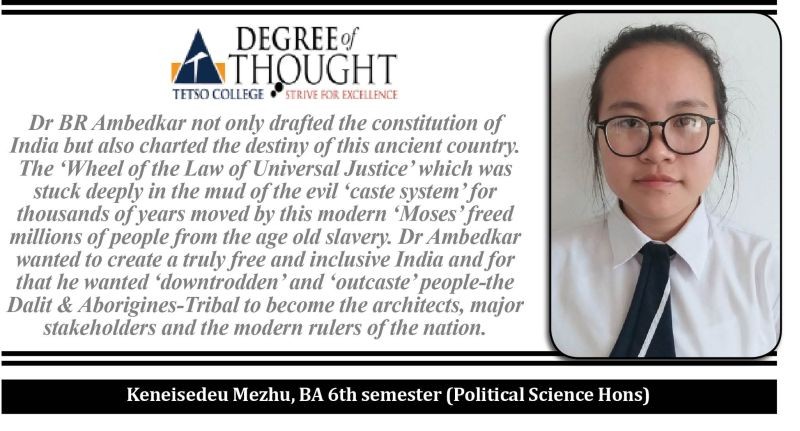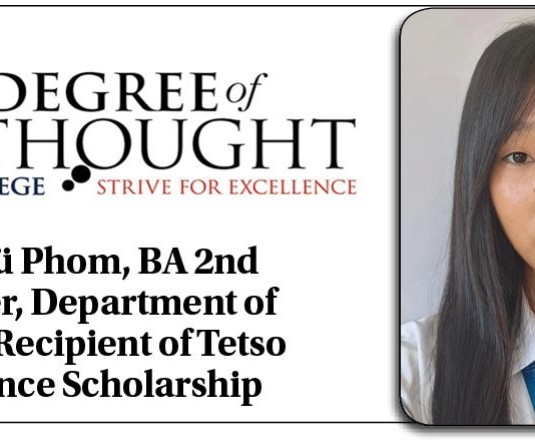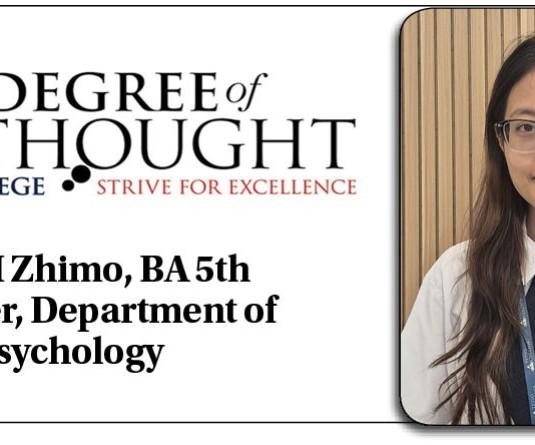
Tribal Communities have progressed in Independent India, with having a prominent figure like Dr BR Ambedkar who fought for the rights of weaker sections of society, SC, ST, OBC and Religious Minorities. Tribal, Dalit, OBC, and Religious Minorities were subjugated, discriminated and systematically exploited by the existing caste Hindu society. He fought against both exploitations of Britishers and the exploitation that exists within Indian society.
Ambedkar clearly identified socio economic backwardness of tribals. He knows that tribals are the people who lived without much of any influence from the outside society; having autonomy and rights over the forest resources. But during the course of colonial rule, they had lost all those privileges with the advent of Britishers into the forest areas with their draconian forest laws and land regulations. East India Company’s advent in constructing modern transport systems like railways and roadways in order to plunder the heavy raw materials and policy on tribal is to exploit their labour for generating revenue and controlling the forest resources by enacting new forest laws; resulted in far-reaching exploitations of the tribal communities.
All of these exploitative experiences shared by the communities tailored the course of action which is seen leading by Ambedkar. He drafted the 5th Schedule for the provisions related to the administration and control of Scheduled Areas and Scheduled Tribes and 6th Schedule to deal with the administration of tribal areas in the four northeastern states of Assam, Meghalaya, Tripura and Mizoram. It is evident that the sixth schedule also designates tribal areas in Assam and Meghalaya where autonomous district councils and regional councils have been constituted with powers to make laws and regulations for management & administration of land, forests, shifting of cultivation, appointment or succession of chief and headman, inheritance of property, marriage and divorce, social customs and matters relating to village or town administration. The entire idea behind the creation of the 6th Schedule was to help tribal communities in northeast India to retain and maintain the ‘natural, traditional autonomy over their life, culture and governance’.
Tribal Communities are protected under Fundamental Rights (Art.12-35), which applies to every citizen of the country. Apart from Fundamental Rights, there are Articles in the Constitution which aid the tribal communities of India. Article 275 (1) of the constitution provides for grant-in-aid from the Union to the States for promoting the welfare of the Scheduled Tribes or for raising the level of administration of the Scheduled Areas and Art 224 (in part X) envisages a special system of administration for certain areas designated as ‘scheduled areas and tribal areas, simultaneously. The Directive Principles of State Policies (Art. 36-51) specifies the guidelines to the states to do every possible act to improve the conditions of all the citizens which includes the Scheduled Tribes.
Ambedkar was concerned about Scheduled Tribes as he understood that they will be made ‘slaves’ in the hands of majority and therefore, he wanted to have a separate commission for the rights and welfare of Scheduled Tribes to look after their conditions and propose developmental plans for them. That’s the reason he enshrined Article 342 especially for Scheduled Tribes. Thus, tribal development in the true sense and in the present context of India is in fact a post-independence concept and draws the spirit from the constitution itself.
Ambedkar in his book “Communal Deadlock And Ways to Solve It” (1945), writes about the Aboriginal Tribes thus “…The Aboriginal Tribes have not as yet developed any political sense to make the best use of their political opportunities and they may easily become mere instruments in the hands either of a majority or a minority and thereby disturb the balance without doing any good to themselves. In the present stage of their development it seems to me that the proper thing to do for these backward communities is to establish a Statutory Commission to administer what are now called the ' excluded areas ' on the same basis as was done in the case of the South African Constitution. Every Province in which these excluded areas are situated should be compelled to make an annual contribution of a prescribed amount for the administration of these areas.”
The mentioned provisions are the strongholds of Ambedkar’s hope and vision for Tribal Development which will come true with the effective implementation of constitutional provisions and welfare measures for tribal. He had a vision for inclusive India-one India-free from discrimination; a society standing on the principles of Justice, Equality, Liberty and Fraternity. Taking a view at the status and level of ‘Political Enlightenment’ of our people in Nagaland who still have not been able to grasp the meaning of the principle of “One Man, One Vote, One Value” proves the clarity and gravity of understanding exhibited by Ambedkar about ground situation of tribal population in terms of their awareness about “Political Right” which unfortunately still continuing.
The anxiety of injustices and inequalities may it be in minorities or citizens in general, may we relentlessly search for truth in Ambedkar’s three warnings put forth in his last speech to the Constituent Assembly. First, ‘to hold fast to constitutional methods of achieving our social and economic objectives.’ Second, ‘not to lay their liberties at the feet of even a great man, or to trust him with power which enables him to subvert their institutions.’ Third, ‘not to be content with mere political democracy. We must make our political democracy a social democracy as well. Political democracy cannot last unless there lies at the base of its social democracy.’
Finally, let us accept the tragic fact that Ambedkar was made to be imprisoned within the dimension of his ‘Caste Identity’ but if we look at his work we find a truly ‘universal appeal’. His work influences all spheres of life of every Indian. Today, thoughts of Ambedkar inspired people around the world. Be it Roma people’s movement for Social Justice in Hungary or African-Americans, Red Indians movement in USA or celebration of life and works of Ambedkar in countries like South Africa or Ghana, we see Ambedkar everywhere, and why not, after all he is a symbol of Struggle, Justice and Victory for the ‘rejected’, ‘persecuted’, ‘invisible’, ‘mute’ people of the world.
Degree of Thought is a weekly community column initiated by Tetso College in partnership with The Morung Express. Degree of Thought will delve into the social, cultural, political and educational issues around us. The views expressed here do not reflect the opinion of the institution. Tetso College is a NAAC Accredited UGC recognised Commerce and Arts College. The editors are Dr Hewasa Lorin, Dr Aniruddha Babar, Nisha Dahiya and Meren. For feedback or comments please email: dot@tetsocollege.org






